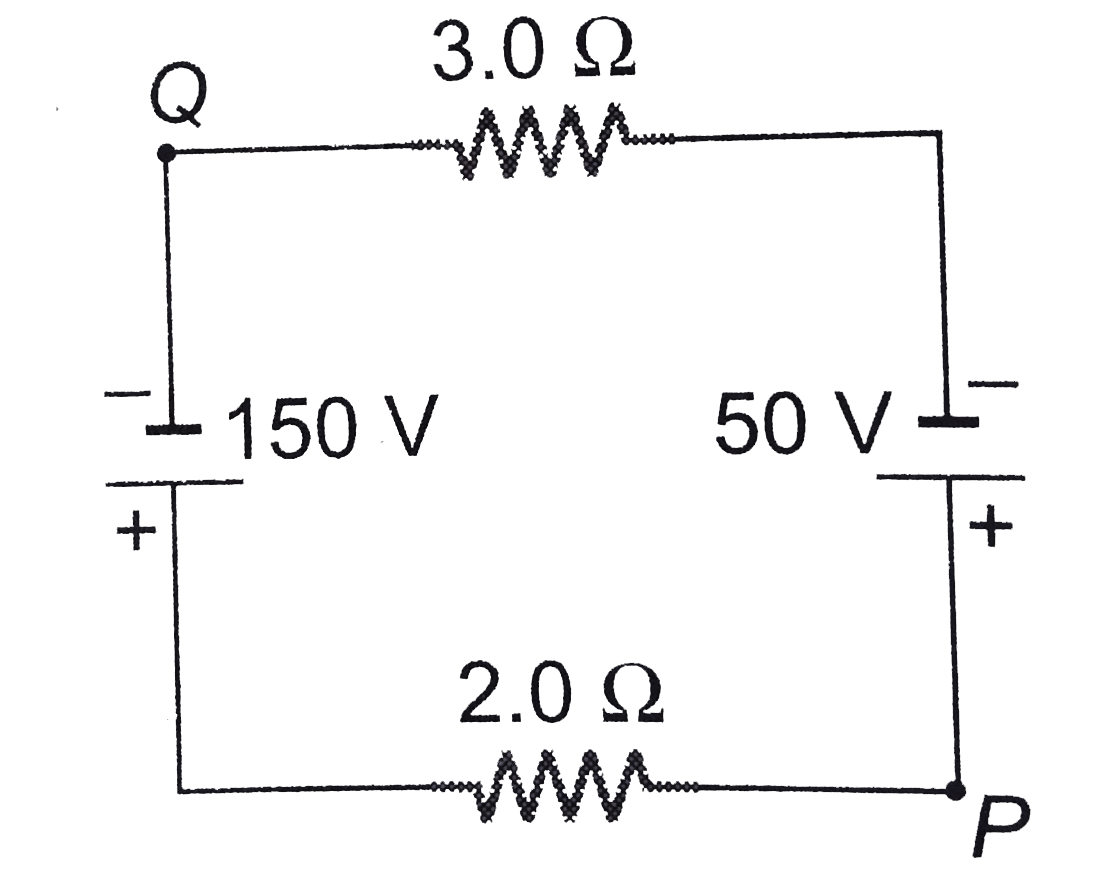If 20J of work has to be done to move an electric charge of 4C from a point, where potential is 10V to another point, where potential is V volt, find the value of V.
20 V
30 V
5 V
15 V
The correct Answer is:D
To solve the problem, we need to find the value of the electric potential V at the second point when a charge of 4C is moved from a point with a potential of 10V and 20J of work is done.
1. Identify the known values:
- Work done W=20J
- Charge Q=4C
- Initial potential V1=10V
- Final potential V2=V (unknown)
2. Use the formula for work done in moving a charge:
The work done W in moving a charge Q through a potential difference ΔV is given by:
W=Q⋅ΔV
where ΔV=V2−V1.
3. Substituting the known values into the equation:
20J=4C⋅(V−10V)
4. Rearranging the equation to solve for V:
First, simplify the equation:
20=4(V−10)
Divide both sides by 4:
5=V−10
5. Solving for V:
Add 10 to both sides:
V=5+10=15V
Final Answer:
The value of V is 15V.
- Work done W=20J
- Charge Q=4C
- Initial potential V1=10V
- Final potential V2=V (unknown)
The work done W in moving a charge Q through a potential difference ΔV is given by:
W=Q⋅ΔV
where ΔV=V2−V1.
20J=4C⋅(V−10V)
First, simplify the equation:
20=4(V−10)
Divide both sides by 4:
5=V−10
Add 10 to both sides:
V=5+10=15V
The value of V is 15V.
Similar Questions
If 50 joule of work must be done to move an electric charge of 2 C from a point, where potential is V volt, the value of V is
View SolutionOn moving a charge of 2C from a point A where potential is +12V to a point B where potential is -12 V, the work done is -
View SolutionOn moving a charge of 7C from a point x where potential is +5.5V to a point y where potential is -7.6 V, the work done is -
View SolutionFind Vba, if 12J of work has to be done against an electric field to take a charge of 10−2 C from a to b.
View SolutionHow much work is done in moving a charge of 2C across two points having a potential difference of 12V ?
View SolutionIn Figure if the potential at Point P is 100V, what is the potential at point Q?
 View Solution
View Solution12 j of work has to be done against an existion electric field to take a charge of 0.01 C from A to B. How much is th potential difference VB−VA?
View SolutionA ball of mass 1g and charge 10−8C moves from a point A. Where potential is 600 volt to the point B where potential is zero. Velocity of the ball at the point B is 20cm/s. The velocity of the ball at the point A will be
View SolutionThe kinetc energy of a chargd particle decreased by 10 J as it moves from a point at potential 100 V to a point at potential 200V . Find the charge on the particle.
View SolutionFind the work done by some external force in moving a charge q=4μC from infinity to a point, where electric potential is 104V
View Solution

